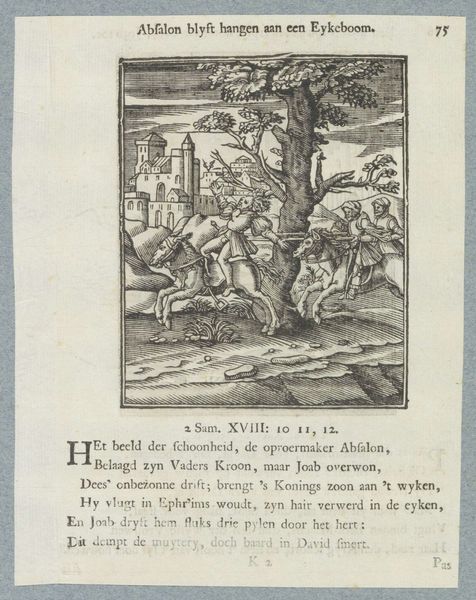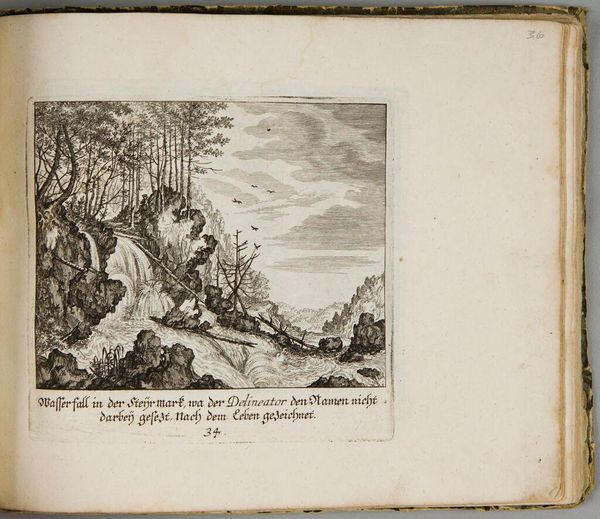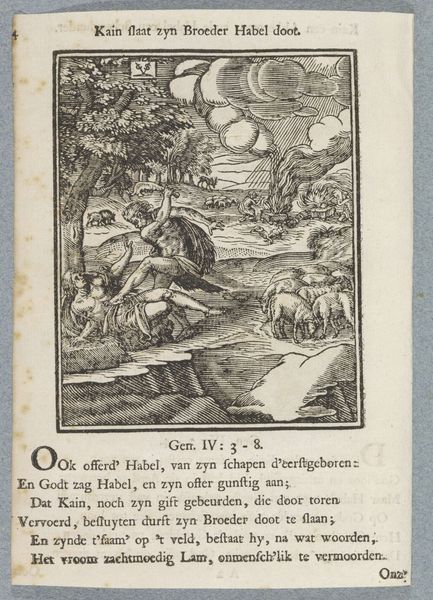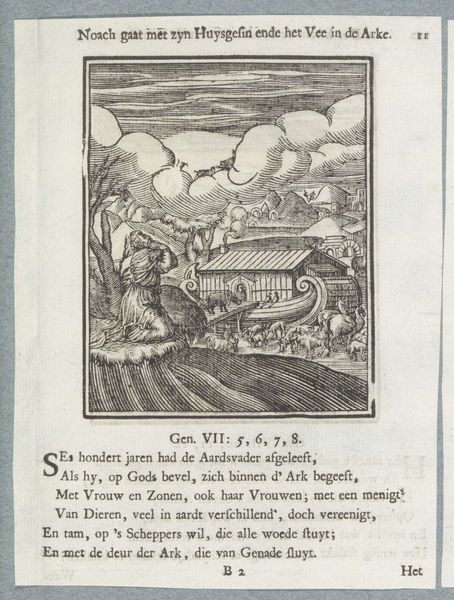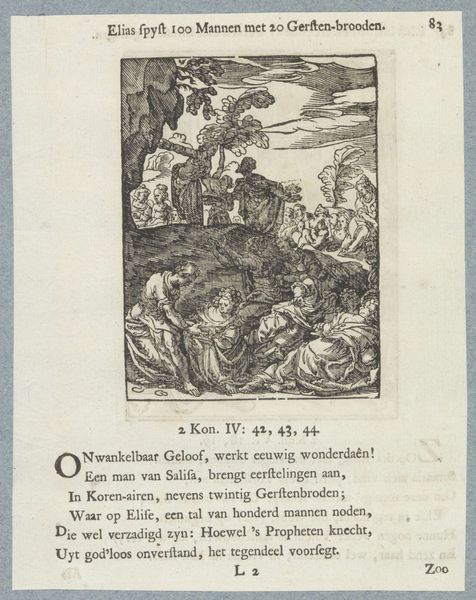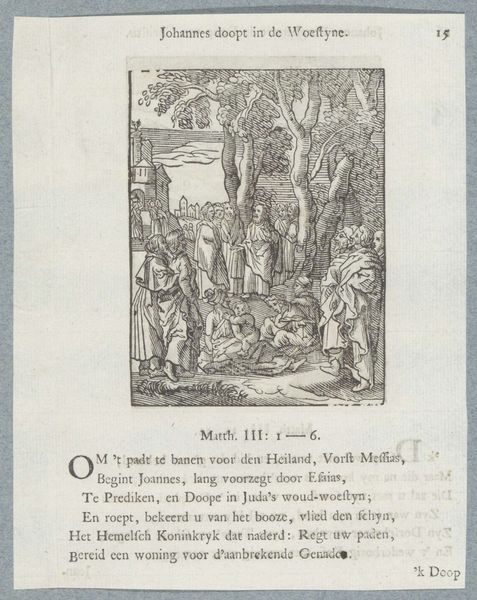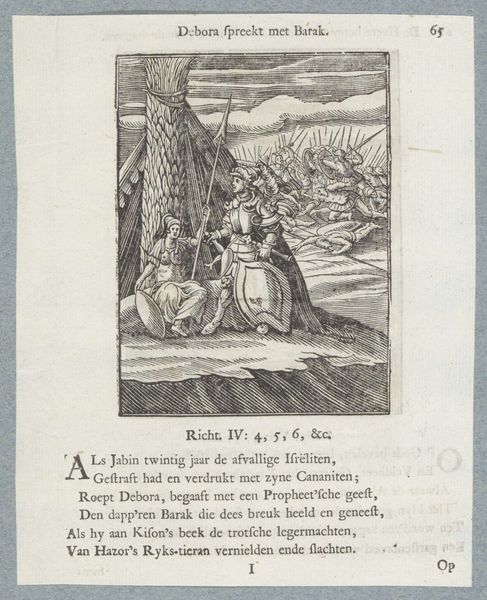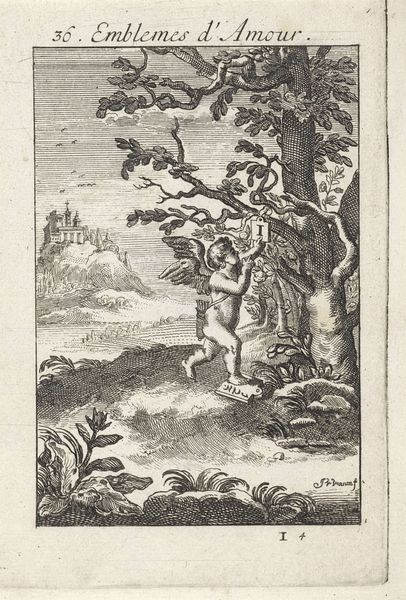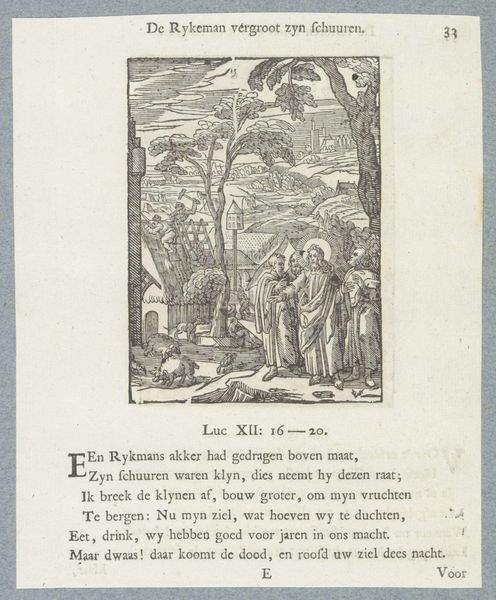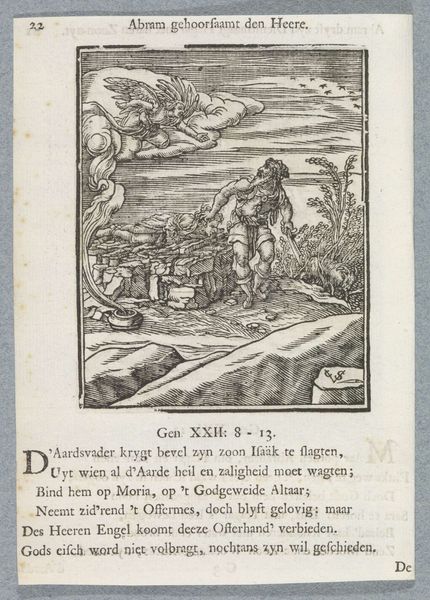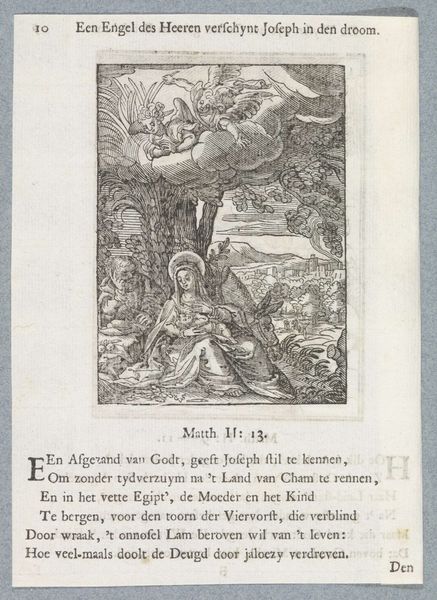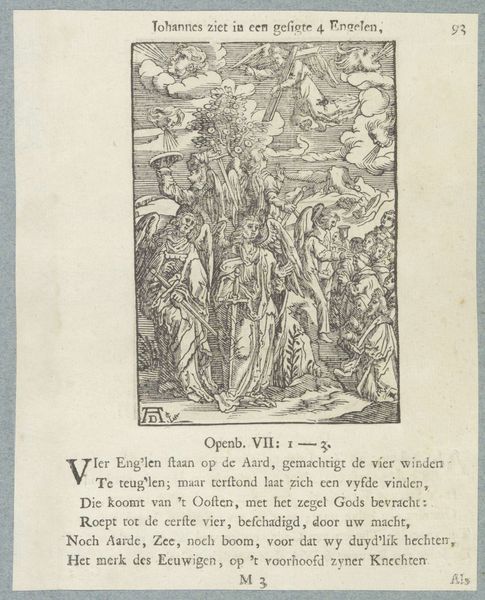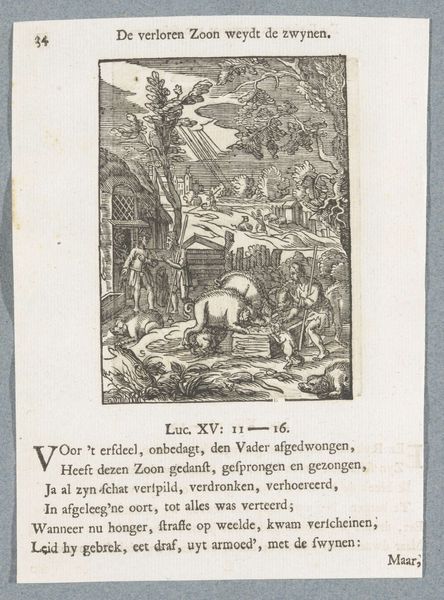
Adam, Eva en de dieren in het Aards Paradijs c. 1645 - 1740
0:00
0:00
print, engraving
# print
#
landscape
#
figuration
#
history-painting
#
northern-renaissance
#
engraving
Dimensions: height 104 mm, width 86 mm, height 171 mm, width 133 mm
Copyright: Rijks Museum: Open Domain
Curator: Our attention is drawn today to "Adam, Eva en de dieren in het Aards Paradijs," an engraving dating from around 1645 to 1740. It is currently held in the collection of the Rijksmuseum. Editor: At first glance, the scene seems peaceful, idyllic even. But there's also a kind of crowded intensity to the composition, with animals and figures competing for space. Curator: Indeed, note the precision of the engraving technique. The lines create textures that suggest an almost tactile quality, particularly in rendering the foliage and animal fur. How the artist uses hatching and cross-hatching adds depth. Editor: I'm interested in how the image functions within the social context of its time. It clearly reflects a specific interpretation of the Genesis story, presenting a view of paradise before the Fall. The way Adam and Eve are depicted reflects particular ideals of beauty, while the diversity of animals suggests dominion over nature. Curator: The figures of Adam and Eve occupy the foreground, rendered with detailed musculature. The serpent is present, coiled around the tree. Symbolically, of course, it's rich territory for iconographic readings. It is an interesting interpretation considering the moment before "the fall," which seems rather blissful. Editor: Looking closely at the visual structure and how the artist composes his characters with that biblical idea really enhances the propaganda in play. By associating virtue with those of God's Will, it provides a moral lesson to its viewership. Curator: Exactly. By deconstructing it by how it all aligns with Northern-Renaissance art and form, you reveal its persuasive messaging for social reform. Editor: Ultimately, the image offers a fascinating glimpse into the religious and cultural mindset of the era. Curator: And, viewed formally, an interesting essay on the capabilities of the print medium and artistic interpretations of religious subjects.
Comments
No comments
Be the first to comment and join the conversation on the ultimate creative platform.
